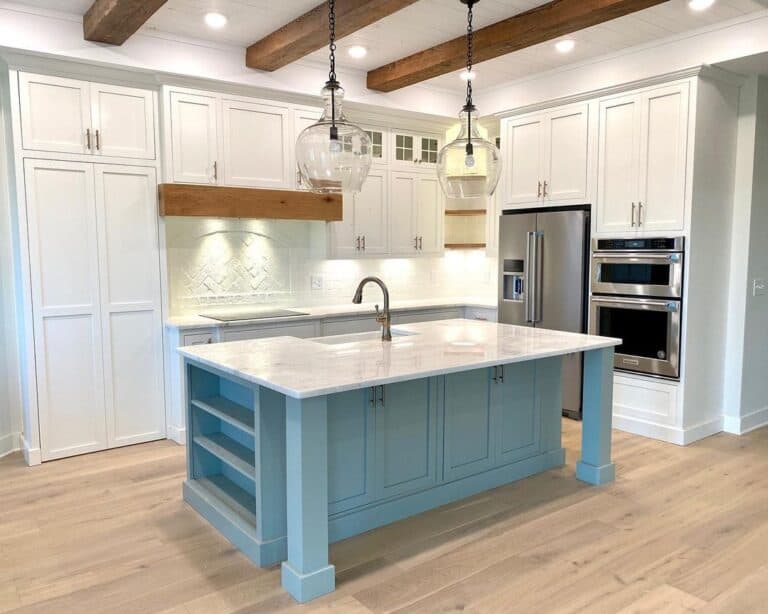Personalize Your Kitchen Look with One-of-a-kind Legs For Kitchen Island Options
Personalize Your Kitchen Look with One-of-a-kind Legs For Kitchen Island Options
Blog Article
Vital Elements to Take Into Consideration When Picking Legs For Cooking Area Island
Picking the proper legs for a kitchen area island involves a careful assessment of multiple factors that can significantly affect both performance and aesthetic allure. Among these, the selection of product plays a critical role in making certain toughness, while the style must enhance the existing decor. Factors to consider such as height and weight assistance are vital for stability and convenience. As we discover these elements, it comes to be clear that each decision can have far-ranging implications for the general kitchen experience. What subtleties should be considered in each of these groups to achieve the excellent balance?
Product Options
When selecting legs for a kitchen area island, recognizing the various material choices is crucial for accomplishing both aesthetic allure and architectural stability (Legs For Kitchen Island). The selection of material considerably affects not just the sturdiness of the island yet additionally its overall design and performance
Timber is a preferred selection, providing heat and convenience. Strong woods, such as oak or maple, provide stamina and can be stained or painted to match the cooking area style. Steel legs, typically made from stainless-steel or functioned iron, contribute a modern-day and industrial feeling while guaranteeing sturdiness and stability. These materials are resistant to wear and can support substantial weight, making them perfect for larger islands.
One more choice is engineered materials, like MDF or plywood, which can be extra cost-efficient while still using a variety of finishes. They may not offer the very same degree of stability as strong timber or metal. Legs For Kitchen Island. Products such as acrylic or glass can produce a contemporary look, though they may call for extra support to make certain stability.
Inevitably, the choice of product for kitchen area island legs should straighten with the desired capability and the general motif of the kitchen area.
Design And Style

When thinking about style, the shape and finish of the legs are essential. Tapered legs can provide a feeling of lightness and beauty, while thicker, extra durable legs can share strength and security. Furthermore, the finish-- be it repainted, tarnished, or all-natural-- need to match the kitchen cabinetry and countertop products to create a unified look.
Furthermore, the layout of the legs can also reflect individual taste. Personalized or decorative legs, such as those including elaborate carvings or one-of-a-kind geometric forms, can function as focal factors, adding character and individuality to the kitchen. Ultimately, the ideal selection will certainly not just enhance capability but also raise the aesthetic allure, making the cooking area island a standout feature of the home.
Height Considerations
Choosing the proper elevation for kitchen island legs is important, as it straight affects both performance and comfort. The conventional elevation for a kitchen island generally varies from 36 to check this 42 inches, aligning with common countertop heights.

It is additionally important to represent users' preferences and heights. Tailoring the height can ensure a comfy experience for all relative, making the kitchen island a more useful and pleasurable area.
Weight Assistance
Making certain adequate weight assistance for kitchen island legs is crucial for both safety and security and capability. The cooking area island usually serves multiple functions, consisting of cooking, eating, and added storage space, requiring a robust support structure. When selecting legs, it is crucial to take into consideration the overall weight capacity required based on the island's meant usage and the products that will be put on it.
The selection of product for the legs plays a significant duty in their weight-bearing capacities. Strong wood, steel, and heavy-duty compounds generally supply premium strength compared to lighter products. In addition, the style of the legs-- whether they are right, tapered, or have a pedestal type-- can affect their capability to disperse weight efficiently throughout the structure.
Always speak with the moved here producer's specs pertaining to tons limitations to make sure that the legs can maintain the intended weight without compromising safety and security. In summary, selecting kitchen island legs with ample weight assistance is necessary for producing a risk-free and useful cooking room.
Installation and Upkeep
Correct installment and upkeep of kitchen area island legs are vital for ensuring longevity and security. This frequently includes securing the legs to the island base utilizing suitable bolts, making sure that the legs are degree and straightened.
As soon as set up, normal upkeep is necessary to maintain the stability and appearance of the legs - Legs For Kitchen Island. For wooden legs, routine cleansing with a wet cloth and application of ideal wood gloss can prevent wetness damages and keep their surface. Metal legs might need a mild cleansing option to remove grease and gunk, followed by a dry fabric to avoid rust development
Furthermore, inspect the legs on a regular basis for indicators of wear or damage, such as cracks or loose joints. Tightening up screws or bolts as needed can also prolong the lifespan of the legs. By sticking to these installment and maintenance techniques, property owners can guarantee that their cooking area island stays sturdy and visually appealing for years to come.
Final Thought

Aesthetic coherence is paramount in choosing the design and style of legs for a cooking area island, as these elements substantially influence the total atmosphere of the area. Tapered legs Clicking Here can provide a sense of lightness and beauty, while thicker, more robust legs can share stamina and stability.Choosing the appropriate height for cooking area island legs is essential, as it directly impacts both performance and convenience. In summary, choosing kitchen island legs with sufficient weight support is vital for creating a secure and practical culinary space.
In final thought, choosing legs for a kitchen island necessitates careful factor to consider of numerous aspects, including material alternatives, style, elevation, weight support, and installation.
Report this page